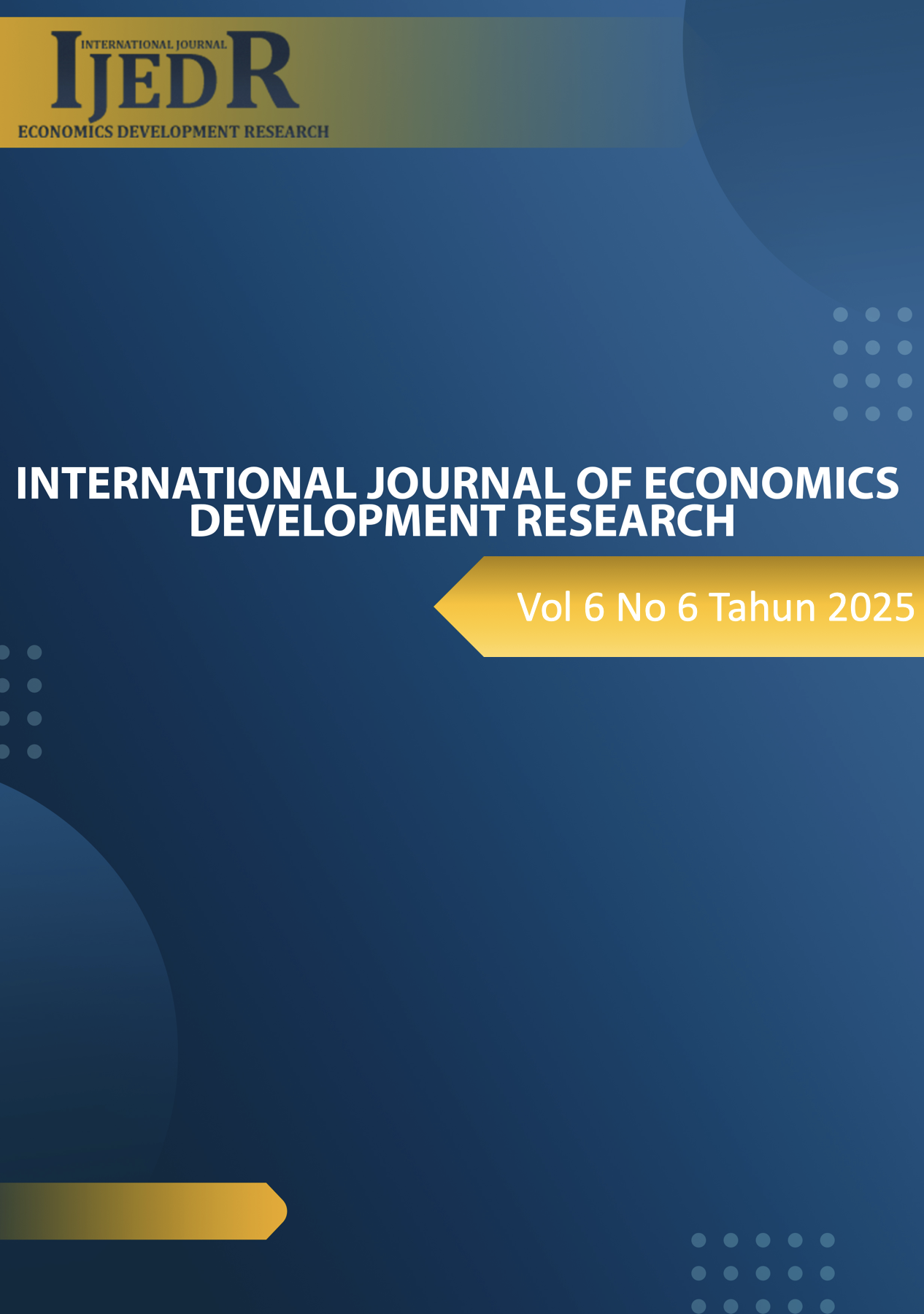Driving the Cashless Economy: The Influence of QRIS Utilization on Consumer Purchase Intention in Surakarta
DOI:
https://doi.org/10.37385/ijedr.v6i6.9378Keywords:
Community Interest, Non-Cash Payment, Payment Technology, Purchase Intention, QRISAbstract
This study aims to analyze the influence of payment technology, non-cash payment, purchase intention, and community interest on the use of the Quick Response Code Indonesia Standard (QRIS) among the people of Surakarta. The research employs a quantitative approach with primary data collected through an online questionnaire during the 2021–2023 period. The sample was obtained using cluster random sampling, involving Surakarta residents who had used QRIS at least once and exhibited a high level of purchase intention. The dependent variable is QRIS usage, while the independent variables include payment technology, non-cash payment, purchase intention, and community interest. Data analysis was conducted using multiple linear regression after validity, reliability, and classical assumption tests. The findings indicate that payment technology, non-cash payment, purchase intention, and community interest significantly affect QRIS usage. This study provides empirical insights into the factors driving QRIS adoption in Surakarta and serves as a foundation for future research in other regions.
References
Alam, S. S. (2024). Customers’ intention towards using QR codes in mobile payments: Integrating TAM and SOR. Telematics and Informatics Reports, 7, 100345. https://doi.org/10.1016/j.tair.2024.100345
Andriyani, F., Yulianti, & Tim. (2024). QRIS adoption and utilization: Examining Gen Z’s privacy and behavioural intention in Indonesia. Journal of Business Studies Indonesia, 9(4), 201–223.
Eren, B. A. (2022). QR-code m-payment from a customer experience perspective. International Journal of Information Management, 62, 102432. https://doi.org/10.1016/j.ijinfomgt.2022.102432
Febriaty, H. (2019). Pengaruh sistem pembayaran non tunai dalam era digital terhadap tingkat pertumbuhan ekonomi Indonesia. Prosiding FRIMA (Festival Riset Ilmiah Manajemen dan Akuntansi), 2, 307–313.
Halim, N. R., & Iskandar, D. A. (2025). Pengaruh digital marketing dan digital payment terhadap minat beli konsumen di era cashless: Studi kasus Indonesia. JUPEA (Jurnal Pengembangan Ekonomi dan Akuntansi), 12(1), 47–65.
JSTPM (Emerald). (2024). Modelling the adoption of QRIS payment method usage among young Indonesians. Journal of Science and Technology Policy Management, 15(4), 301–322. https://doi.org/10.1108/JSTPM-09-2024-0364
Lu, S. Q., & Colleagues. (2024). How mobile payment apps influence consumer purchases: Transaction frequency, basket size, and sales effects. Journal of Retailing and Consumer Services, 72, 103123. https://doi.org/10.1016/j.jretconser.2024.103123
Muchtar, E. H. (2024). Quick Response Code Indonesian Standard (QRIS) e-payment adoption: A customer perspective using UTAUT. Cogent Social Sciences, 10(1), Article 2316044. https://doi.org/10.1080/23311975.2024.2316044
Nurluviyana, S. (2020). The role of spiritual leadership and quality of work life in enhancing job performance through organizational commitment. Global Journal of Business Research, 14(2), 34–50.
Nurqamarani, A. S., & Colleagues. (2024). The integration of TRAM and trust in QRIS adoption for micro, small, and medium enterprises in Indonesia. Journal of Information Systems Engineering and Business Intelligence, 10(3), 314–327. https://doi.org/10.20473/jisebi.10.3.314-327
Ong, H. B., et al. (2022). The effect of cashless payments on internet and mobile banking usage: Evidence from multiple countries. PLOS ONE, 17(6), e0269999. https://doi.org/10.1371/journal.pone.0269999
Putri, I. G. A., & Wulandari, S. (2019). Mediating role of organizational commitment in negative employee perceptions and job satisfaction. Jurnal Ekonomi dan Bisnis, 22(3), 213–225.
Ramayanti, R. (2024). Exploring intention and actual use in digital payments: New payment methods and user behavior. International Journal of Electronic Commerce Studies, 21(1), 45–67. https://doi.org/10.1016/j.ijecs.2024.01.004
Schomburgk, L., & Coauthors. (2024). Less cash, more splash? A meta-analysis on the cashless effect and consumer spending. Journal of Consumer Psychology, 34(2), 215–234. https://doi.org/10.1016/j.jcps.2024.04.003
Setiawan, I. W. A., & Mahyuni, L. P. (2020). QRIS di mata UMKM: Eksplorasi persepsi dan intensi UMKM menggunakan QRIS. E-Jurnal Ekonomi dan Bisnis Universitas Udayana, 10, 921. https://doi.org/10.24843/eeb.2020.v09.i10.p01
Setiawan, R., & Mahyuni, L. (2021). Analisis penggunaan e-wallet dalam mempengaruhi minat beli di kalangan mahasiswa. Student Research Journal, 2(4), 36–46.
Springer Article (Impulse Buying & QR Payments). (2025). Will satisfaction toward QR code payment increase impulse buying? Journal of Retailing and Consumer Services, 78, 103568. https://doi.org/10.1057/s41264-025-00323-w
Syaifuddin, A. F., Rahman, K., Baru, G., Kantor, I., Bank, P., & Solo, I. (2022). Analisis faktor yang mempengaruhi minat penggunaan QRIS sebagai metode pembayaran pada masa pandemi. ASJIF, 1(1), 1–21.
Widayat, W., Marsudi, & Colleagues. (2023). QR-code-based payment: Does the consumer intend to adopt retail buying transactions? Business Perspectives Journal, 21(2), 89–108. https://doi.org/10.2139/ssrn.4500000
Yusuf. (2023). Analisis pengambilan keputusan karir mahasiswa dengan eksplorasi karir sebagai pemediasi. Jurnal Ilmiah MEA: Manajemen, Ekonomi, dan Akuntansi, 7(3), 1192–1204. https://doi.org/10.47134/jampk.v2i3.630
Zalukhu, S. (2025). The influence of using the QRIS digital payment method on consumer purchasing behaviour: An empirical study in Indonesia. Jurnal Riset Akuntansi dan Keuangan, 13(1), 3064. https://doi.org/10.37641/jrak.v13i1.3064





